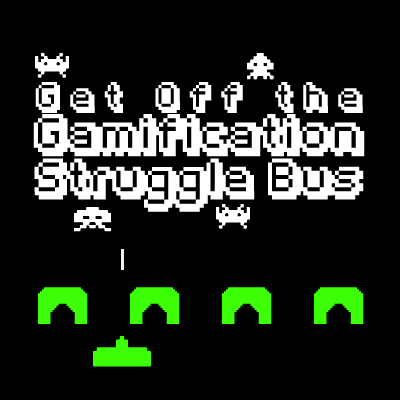Research firm Gartner released a report predicting that 80 percent of gamified apps will fail to meet their objectives by 2014. The report cites poor design, including meaningless points and badges, as the top reason for the failure of these applications.
Do your learning games drive business results through changes in employee behavior? Or will you be part of that 80% whose gamified learning fails to meet objectives? That same Gartner report points out that many companies ignore the "more subtle and more important game design elements, such as balancing competition and collaboration, or defining a meaningful game economy." Don’t be one of those companies!
Consider this your map to get off the gamification struggle bus and on the road to success!
- Identify key business problems you want to solve
Gamification is only effective when it encourages specific behaviors to achieve certain goals. Identify the success factors that lead to the business results you want so you can be sure to incentivize toward those. It’s important to start out with a plan. Don’t just create a game for the sake of “making training fun!” - Make sure you’re not gamifying a flawed process
Gamifying the wrong goals can be just as bad as ignoring goals or not doing training at all. If your process works, game mechanics can make it more fun and encourage employees to succeed. But if your current process is flawed, broken or inefficient, you'll just be encouraging your employees to continue performing ineffectively. - Set realistic expectations
Keep in mind that game mechanics can jumpstart behaviors, but don’t necessarily sustain behaviors. Much like you develop a tolerance to caffeine the more you drink it, after a certain amount of play, the impact of any game mechanic will begin to fade. When done right, however, by the time the extrinsic motivator has worn out, your employees will see the value of the new behavior and continue it based on their own intrinsic motivation.- Extrinsic motivation is when you perform an action to get an external reward, like twenty gold coins in an online game.
- Intrinsic motivation is when you perform an action because it is personally rewarding, like solving a puzzle because you enjoy the challenge, not because you want twenty gold coins.
- Measure results
When game mechanics are used correctly, there’s a proven psychological impact. With that impact comes results for you. But how do you know if the results are at the level you want? You need to track scores with a learning management system like CourseMill LMS and measure your results. Have sales increased? Has customer feedback improved? Whatever your target was, did you reach it?
Keep these 4 guidelines in mind, and you won’t make a wrong turn on the way to gamification glory! For more e-Learning tips, subscribe to the Lectora® e-Learning Blog!









